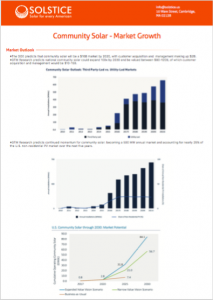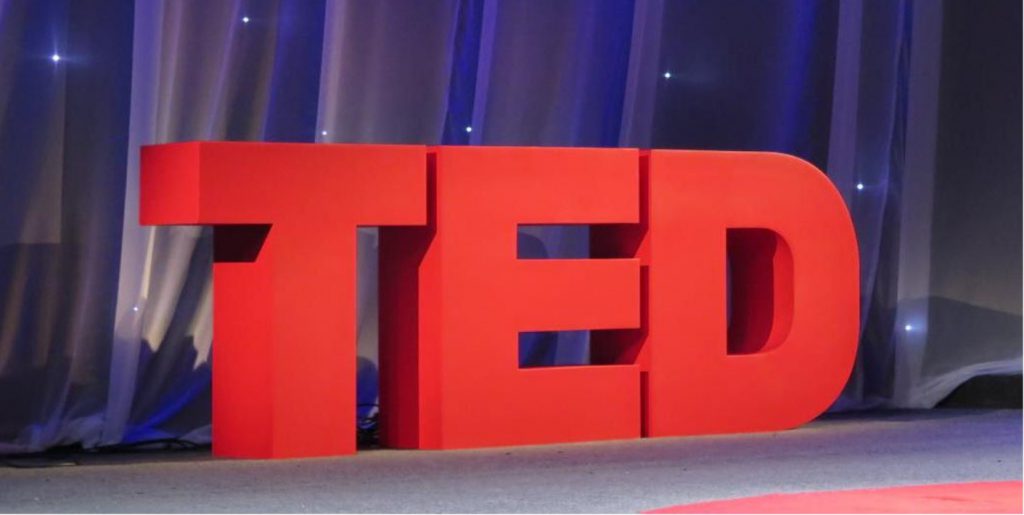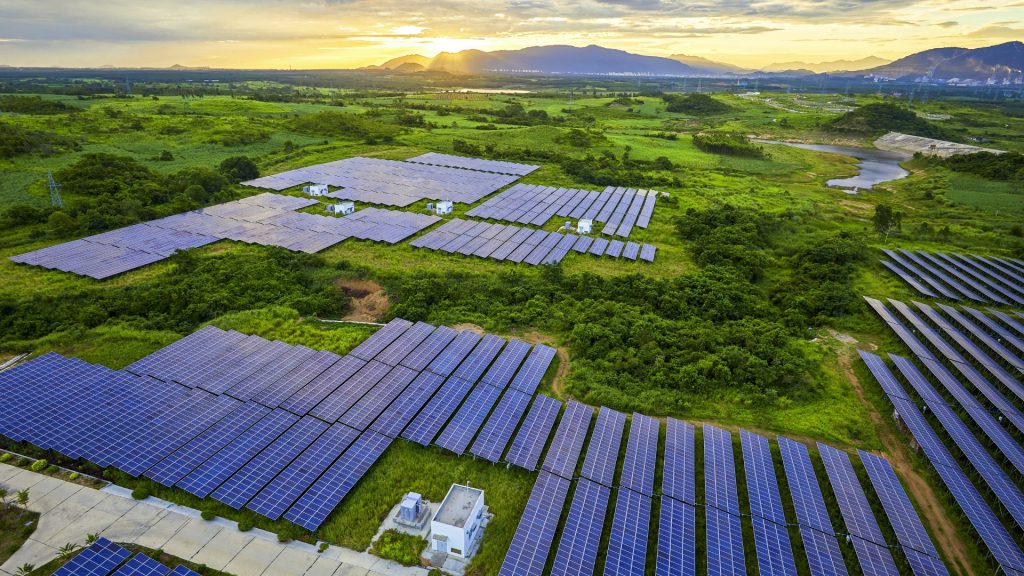We’re really excited about community solar, and we’re not the only ones.
Seven years ago, community solar was barely a blip on anyone’s radar in America. It was an idea built on encouraging premises–good for the planet, good for communities, and, given falling renewable energy costs, good for business–but hardly any projects had actually been implemented. Plenty doubted the industry’s ability to take off.
After all, community solar was never going to be like traditional renewable energy projects. It veered sharply from rooftop solar installations, offering a whole new way to implement and pay for clean energy in America. Its advocates and leaders promised to transform solar power from a benefit enjoyed by the fortunate few to a solution for the millions of Americans that had been locked out of the market. Bold proposition. Like any new idea, it needed time to prove itself.
Today, community solar is doing just that: bringing affordable energy to thousands of customers across the country. It’s creating jobs, injecting revenue into local communities, and offsetting millions of tons of carbon emissions. At the same time, it’s bringing monthly savings to businesses and households so they can put their money toward the things that matter most.
Just how well is the community solar market doing? Our friends from GreenTech Media Research regularly provide great data on the clean energy industry. We’ve curated some of their research to offer an overview of community solar’s growth and an outlook for its trajectory in the years to come.
Table of Contents
The Community Solar Market Is Exploding
It’s telling that, when we saw a report from GreenTech Media two Februaries ago boldly projecting the installation of over 400MW of community solar in 2017, we were thrilled. Here’s what they predicted:
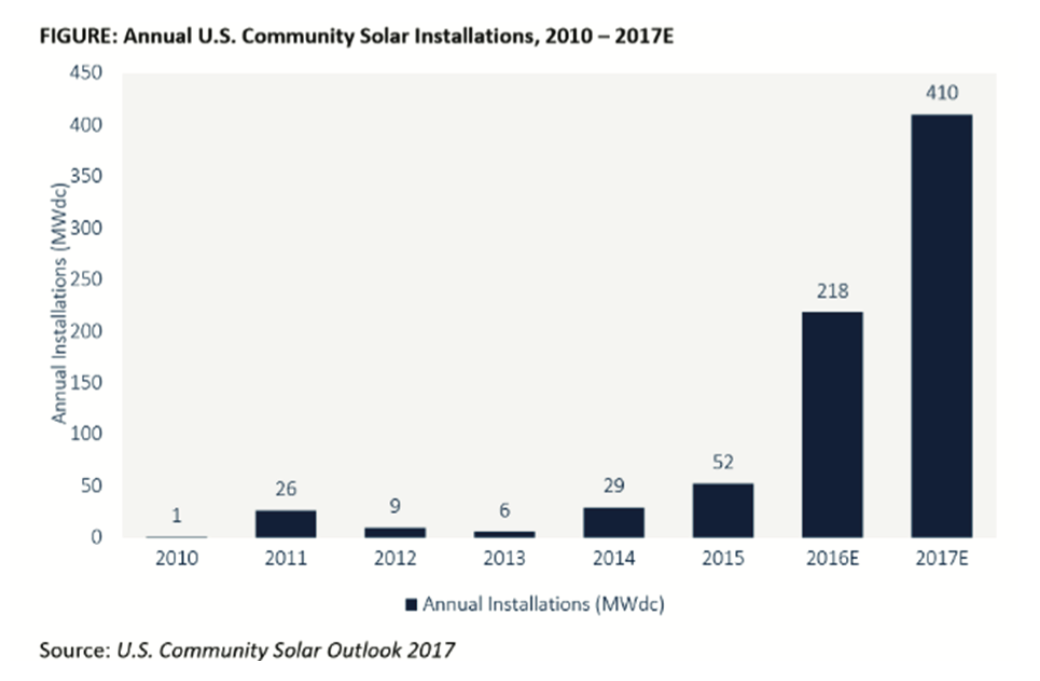
Little did we know that these projections were actually conservative. New installations added over 480 MW to the grid, exceeding projections by about 18%.
The industry has doubled in size each of the past three years, with thousands of customers celebrating the expansion of equitable, inclusive renewable energy. 2017 was a huge year for the community solar industry, more than doubling the total installed capacity from 2011-2016 combined. And 2017 was no outlier. After quarter one, 2018 was already on pace to add more community solar to the grid than the previous year.
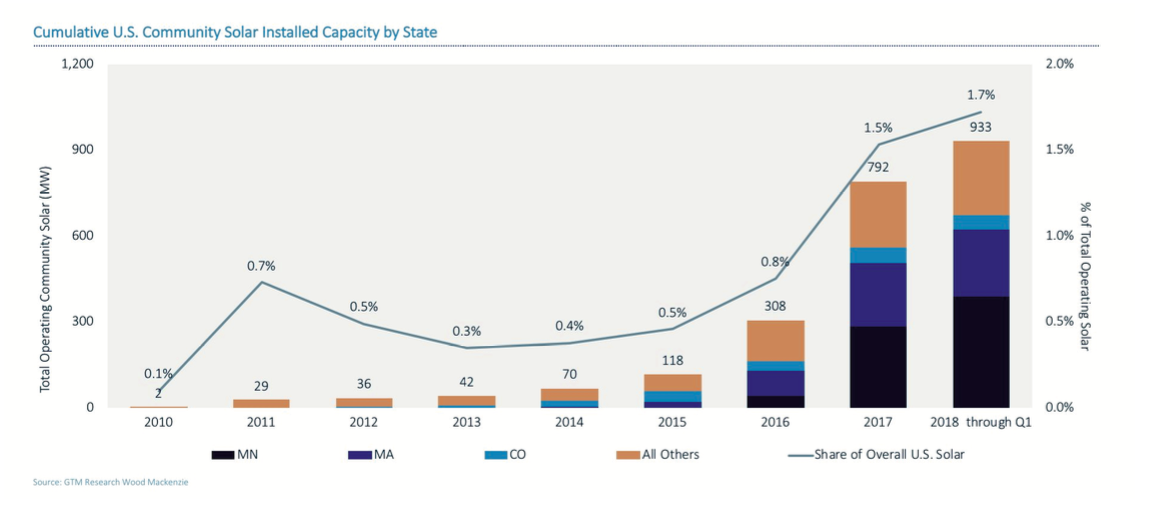
To be sure, this growth hasn’t come effortlessly. The industry struggled to establish itself in its opening years as legislators began to craft policies around an emerging field. New capacity declined in both 2012 and 2013, with just 6 MW installed in the latter year. For context: that’s about three times the size of the 13-acre solar garden Solstice recently helped fill in Otsego County, New York–for the entire country, over an entire year.
Fortunately, Americans’ ever-growing support for clean energy, combined with plummeting costs of solar technology and the industry-wide adoption of customer-friendly contracts, turned the market around. Solstice’s Director of Marketing, Andrew Alayza, has written about the role that properly structured contracts can play in spurring community solar growth. By making clean energy simple and appealing, the community solar industry has expanded total demand for its products to millions more Americans.
Want a condensed PDF of the most important market figures?
More States Are Getting Involved
Another key takeaway from the first GTM chart above is the huge role that Minnesota, Massachusetts, and Colorado have played in expanding the market for shared solar. Along with New York, these states have led on community solar from the start, implementing policies and projects that have helped to shape and direct the industry. Community solar’s first pilot project took place in Colorado in 2011. Minnesota leads on total community solar capacity installed. Solar gardens in New York and Massachusetts serve more households relative to commercial clients, bringing the benefits directly to the end users that usually need them most.
Of note: all but Colorado are among the least sunny states in the entire country, according to NASA data. Just goes to show that solar still works in northern climates.
Still, it’s not all about those four states. Not by a long shot. A short seven years after Colorado began its first pilot, 43 states have either put community solar gardens in place or initiated pilot programs of their own. More and more, legislators recognize that getting ahead on clean energy will bring prosperity to their jurisdictions down the line.
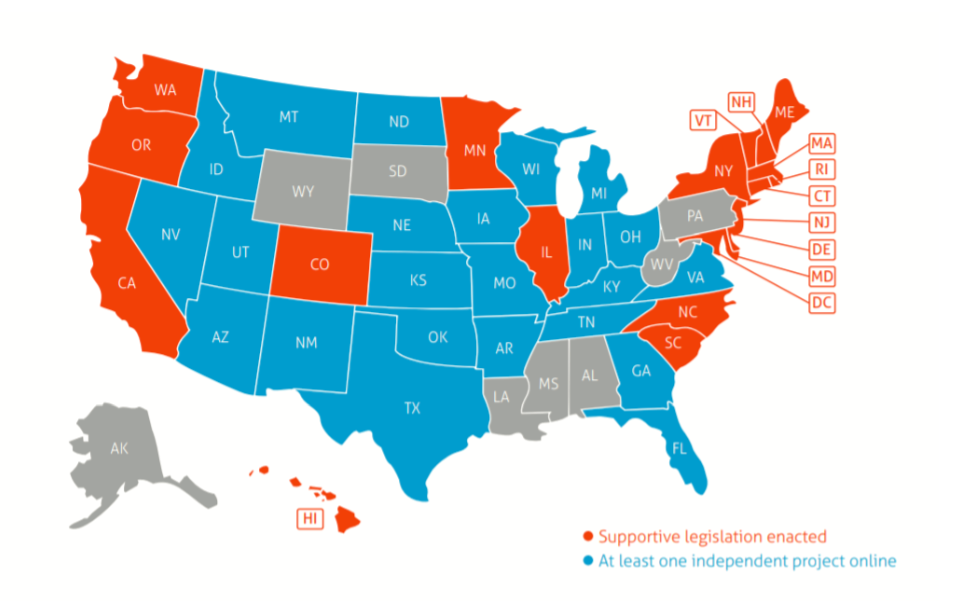
A Bright Future For Community Solar
Community solar has been growing the last few years, but plenty of industries start hot only to burn up in the following years. What does the future hold for shared solar? Again, we turn to GTM Research:
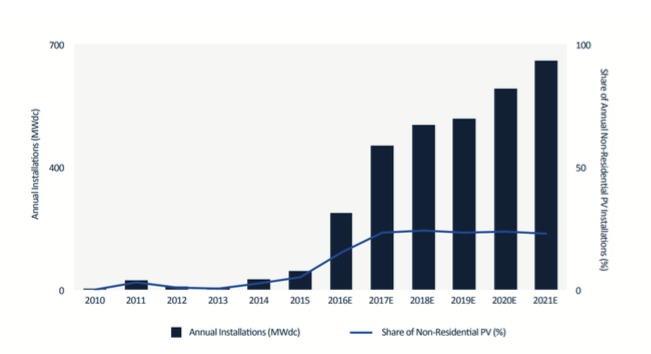
GreenTech Media predicts continued momentum for community solar, creating a 500 MW annual market and accounting for nearly 25% of the U.S. non-residential PV market over the next five years. Additionally, the Department of Energy predicts that community solar will be a $16B market by 2020, with customer acquisition and management (Solstice’s business) making up $2B of that total.
How about 2030? GTM Research predicts national community solar could expand to 100 times its present size by 2030, earning a value of $80-120B–of which customer acquisition and management would be $10-15B.
Expect Utilities To Take the Lead
A key driver of this explosive growth will be utilities’ leadership in community solar development. All around the country, electricity providers recognize the demand for renewable energy and are opting to take advantage of customers’ interest in solar rather than be left behind. In fact, the nation’s first major utility just pledged to go 100% clean by 2050. Here’s how much of an impact GTM expects utilities to have:
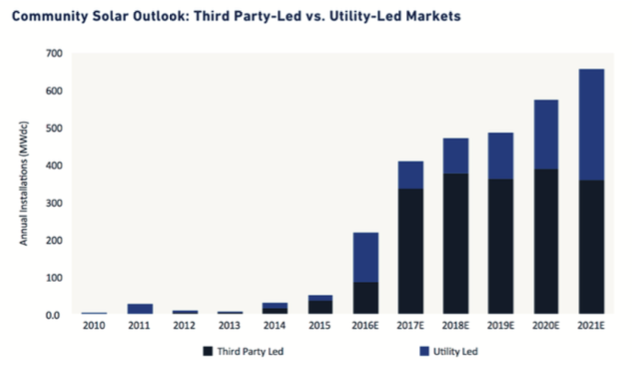
Community Solar Is Here To Stay
Solstice Co-Founder and CEO Steph Speirs recently said in an interview with Conscious Company Media that “we are in the midst of a 4th industrial revolution. The way we’ve gotten our energy hasn’t changed in over 100 years, and it will change in our lifetime. It will change in the next ten years.”
One key step that will fuel clean energy growth as the industry moves forward is the development of new financial metrics that expand access to community solar programs. That’s why Solstice developed the EnergyScore, a more inclusive and accurate alternative to FICO credit checks for qualifying community solar customers. As the EnergyScore is implemented on new projects, it’s opening the door for huge numbers of Americans to join that would otherwise have been needlessly locked out of the market.
If you think community solar is growing fast now, just imagine what will happen as millions more Americans join the pool of potential participants. The bottom line: community solar is going to play an important role in our energy future.
